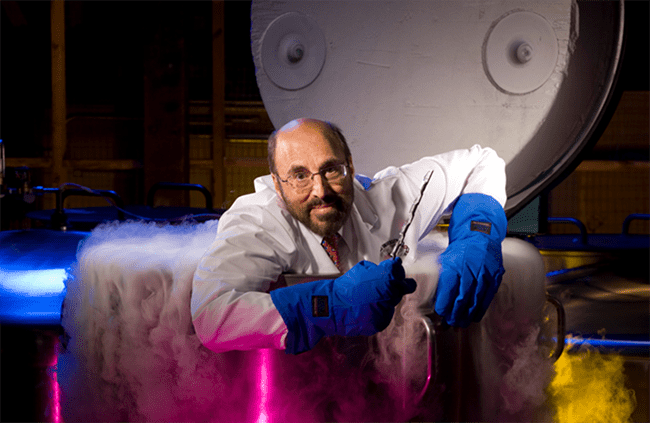In 2010, the Rutgers University Cell and DNA Repository (RUCDR) was awarded nearly $10 million (C06RR030323) to renovate space for a core facility offering biological sample storage and repository services. These funds were provided to the RUCDR through the American Recovery and Reinvestment Act (ARRA), which was intended to stimulate the U.S. economy, create and preserve jobs, and advance scientific research. A total of 148 ARRA awards were granted through ORIP to support the construction or renovation of 64 animal facilities, 56 research laboratories, 17 clinical research facilities or laboratories, 8 imaging facilities, and 7 data centers. The RUCDR, which has been operating since 1998, was funded to provide sample-banking services for hundreds of NIH-funded projects. In addition to storing and distributing RNA, DNA, cell, and tissue samples to researchers across the nation, the RUCDR provides bioinformatic and other analytic services to academic institutions, private companies, and charitable foundations. Given the prohibitive costs associated with biological sample collection, storage, and analysis, these centralized services enable efficient use of NIH resources. “We applied for the construction grant to create a technology facility that would allow us to have end-to-end production in the same facility and that could be reconfigured literally overnight,” said Dr. Jay Tischfield, founder and former Chief Executive Officer and Scientific Director of the RUCDR (Figure 1). “It really helped us because we were able to apply informatics and computational resources to taking samples and following them throughout the process, giving us a superior level of sample integrity.”

Since acquiring the funds, the RUCDR has met the ARRA requirement of creating and expanding jobs; employment grew from 140 to 282 positions from 2012 to 2020. Activities at the facility expanded even further during the COVID-19 pandemic. As patients began to stay home and the number of incoming biological samples dwindled, RUCDR leadership recognized that a new set of services would be required. A research team led by the late Dr. Andrew Brooks, RUCDR Chief Operating Officer and a Rutgers professor, developed a saliva-based COVID-19 test using equipment previously used for extracting RNA from human samples. “We had something like three quarters of a million saliva collection tubes in our warehouse,” explained Dr. Tischfield. “We all spit, and we got samples from the hospital, and we compared the viral titer in our saliva tubes to the samples they gave us from swabs, and it was thoroughly comparable.” The saliva test—which was approved by the U.S. Food and Drug Administration for emergency use and was the first COVID-19 test to be approved for use at home—had the advantage of not requiring extensive personal protective equipment, of which there was a massive shortage during the pandemic’s early days. At drive-through testing sites, collection tubes could be handed to people in their cars, requiring only a single glove for protection. As the requirement for COVID-19 testing increased, the number of RUCDR employees expanded, with more than 500 employees and volunteers performing 80,000 tests per day at the height of the pandemic. “Whatever laboratory space that was on campus, and whatever classroom space that could be converted into a makeshift laboratory, we did,” noted Tischfield. The efforts at the RUCDR gained national attention with features on CNN and in The New York Times, as well as an acknowledgement from the U.S. President.1–3 When a professional sports league ran into challenges with inaccurate COVID-19 tests, the league turned to the RUCDR.4 “I’d like to think we saved Major League Baseball,” said Dr. Tischfield.
With efforts ballooning during the pandemic, it became evident that privatization would be the most efficient means of continuous growth and funding. In 2020, the RUCDR—which by then had become known as RUCDR Infinite Biologics®—was relaunched as an independent entity, Infinity Biologix (IBX), with capital provided by Viking Global Investors. Infinity Biologix has since been rebranded as Sampled SMART Labs and recently has expanded into the United Kingdom. Dr. Tischfield and other experts at Rutgers will continue to provide Sampled SMART Labs with scientific input. Reflecting on the growth and expansion of the repository, Dr. Tischfield, who was Executive Director of the Human Genetics Institute of New Jersey (the original home of the RUCDR) until he retired in the spring of 2022, emphasized the importance of the ARRA funds. “Other funding was never of the magnitude of what we got under the ARRA grant. It was really that funding that allowed us to accomplish what we did.”
Learn more information on the ARRA program and awards.
References
1 Kaplan S, Singer N. FDA clears first home saliva test for coronavirus. The New York Times. May 8, 2020. Accessed September 23, 2022. www.nytimes.com/2020/05/08/health/fda-coronavirus-spit-test.html
2 Howard J. FDA authorizes the first at-home COVID-19 saliva test. CNN. May 8, 2020. Accessed September 23, 2022. www.cnn.com/2020/05/08/us/covid-19-at-home-saliva-test
3 Remarks by President Trump, Vice President Pence, and members of the Coronavirus Task Force in press briefing. The White House. April 27, 2020. Accessed September 23, 2022. trumpwhitehouse.archives.gov/briefings-statements/remarks-president-trump-vice-president-pence-members-coronavirus-task-force-press-briefing-32
4 Wagner J. ‘We didn’t want to sit idle’: a rush to meet pro sports’ testing needs. The New York Times. July 12, 2020. Accessed September 23, 2022. www.nytimes.com/2020/07/12/sports/we-didnt-want-to-sit-idle-a-rush-to-meet-pro-sports-testing-needs.html



